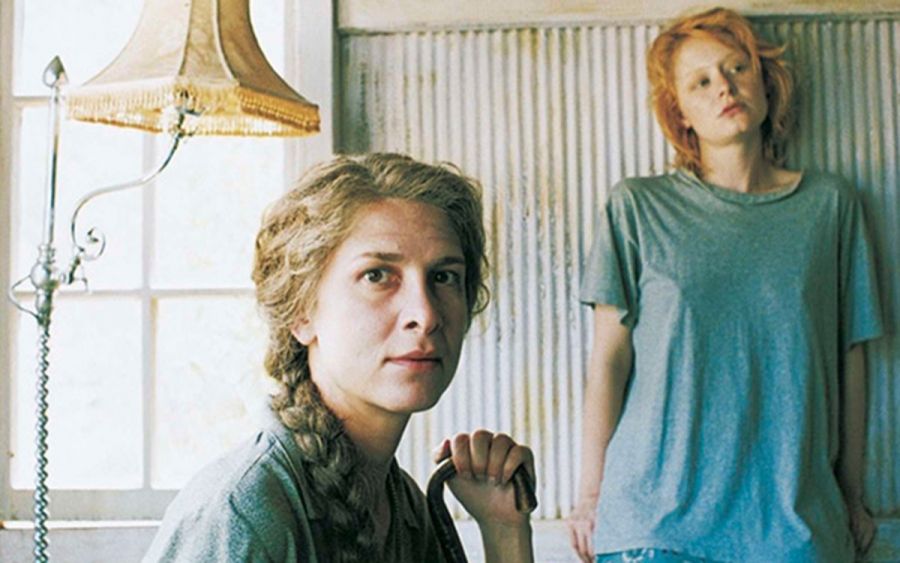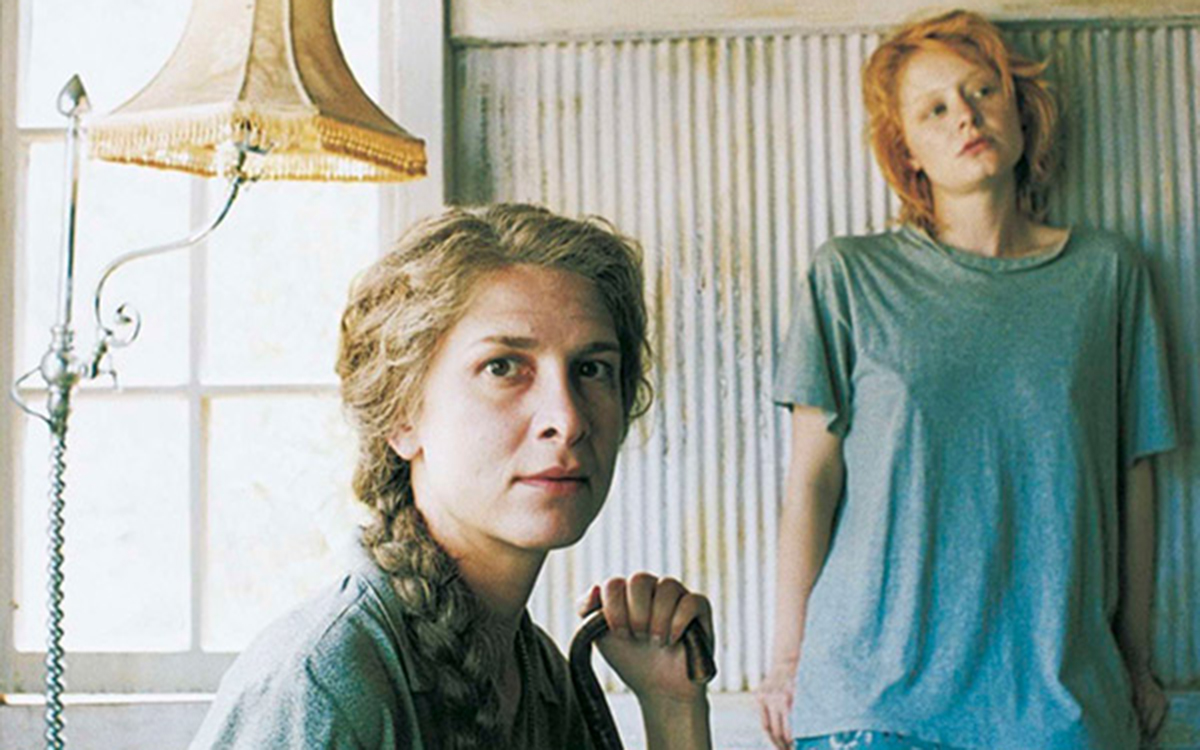
- Free Article: No
- Contents Category: Film
- Review Article: Yes
- Article Title: The Well
- Article Subtitle: A sensitive adaptation of Elizabeth Jolley's dramatic novel
- Online Only: No
- Custom Highlight Text:
The Australian film industry got going in the 1970s perhaps just a little before the resurgence of Australian publishing and perhaps for that reason there has been less interplay between Australian film and Australian writing than there might have been. Patrick White raged and roared about the prospect of Joseph Losey and Max Von Sydow making a film of Voss, but that was the tormenting hope of a more colonial dispensation. There have been bearable films of modern Australian classics like Stead’s For Love Alone and more or less shocking films of such nearly contemporary classics as Monkey Grip (a real monster despite Noni Hazelhurst and Alice Garner as child star doing their best) and, more recently, Lilian’s Story with Ruth Cracknell badly miscast. Cases like Fred Schepisi’s lean, pungent version of Keneally’s The Chant of Jimmie Blacksmith are rarer than they should be though it is encouraging to hear that Mel Gibson owns the rights to My Brother Jack and intends making a film of it one of these days.
- Article Hero Image (920px wide):

- Article Hero Image Caption: Pamela Rabe and Miranda Otto in <em>The Well</em>
- Alt Tag (Article Hero Image): Pamela Rabe and Miranda Otto in <em>The Well</em>
Elizabeth Jolley cries out to be adapted and filmed because her imagination, like White’s, is so intrinsically dramatic that it is almost as though any of her successful novels contains a play within the complex rhetoric of its description and action. And it is one of the counter-intuitive rules of this business, which Susan Sontag has enunciated, that it is drama in the narrow sense, rather than novelistic amplitude, which lends itself to film.
Well, the characteristic Jolley novel is short and offers the reader (in what is perhaps approximately the same reading time) an action which is shaped, if not by the proscenium arch, then by the more fluid form of the radio play at which Jolley is adept and which adheres to the construction of the well-made play though with a suggestively cinematic fluidity and range.
The Well is one of Jolley’s most forceful, and most forcefully dramatic, novels. An older woman, cultivated and thwarted, takes in a young girl as her companion and they proceed to live together in the secluded, if precarious, bliss of rural Western Australia. One night they are driving home, none too typically, from a party and the young woman accidentally runs over (and kills) a man on the usually deserted night road. The solution of her mentor is to place the body in the well on their property.
It would be wrong to give away how the plot works itself out and I should say that I am basing this summary on the film rather than the novel which I have not re-read, but the two seem to me to share an essential temper which is a testament to Jolley’s power as a writer and to the tact and sensitivity with which Samantha Lang has made a film which remains true to both the darkness and delicacy of Jolley’s vision.
The Well is about the love between women and it is not only a delicate representation of the tentative affection of an older woman for a young girl with fears and desires of her own but it manages to dramatise the raw pathos of their predicament, separately and together, through a dramatic action which is at once expressionist in the audacity of the conception and the brutality of the interaction but also has its affinities with the absurdist drama of Beckett or Genet.
What the man in the well, living or dead, may represent in a world of simmering lesbian implication and embattled emotional undernourishment is inscrutable. Jolley is no more interested in the unlocking of the symbolism than she is in the sex that may or may not lie between the veils of intimacy between the women, but rather in the degrees of bafflement and pain which they register when things fall asunder.
In translating this choreography of feeling to the screen Samantha Lang is extraordinarily sensitive. The film is shot superbly by Hardy Walker, in frequent close-up, with an exact sense of the musical relation between character and situation and with a capacity to render landscape symbolic by the power of the camera’s implication. The pale and deepening blues of this feminised outback gain an almost gothic aura of suggestion which is at the same time subtle, whispered rather than intoned.
The highest praise that can be given to Samantha Lang’s film of The Well is that it instantiates the passion and subtlety of a remarkable book and seems, though this is a matter of art, to be a replica of it.
It is a beautifully intense view of two women in the closest proximity and it is sensuous and potentially heartrending like nothing else I can think of in the history of Australian cinema. The only analogy that comes to mind for the interaction between Pamela Rabe and Miranda Otto in The Well is the kind of performance Ingmar Bergman was capable of getting from the likes of Bibi Anderson and Liv Ullmann thirty or more years ago.
It really is on that level though The Well is a long way from the existentialism and absolute concentration of Persona. Samantha Lang follows in the wake of the earlier Jane Campion but not in any way derivatively. It is as if a student of Two Friends and Sweetie had blossomed into a maturity that was all her own.
She is a dazzling director of actors. Pamela Rabe as the older woman gives a performance which deserves, and will receive, the world’s attention. It is full of the exact notation of tentative feeling and Rabe’s range from girlish enthusiasm through all the stages of deliquescent repression and testy selfpossession is a wonder to behold. Rabe is one of our best stage actors but this is the performance of a lifetime, full of tone colour and heart and vulnerability. It is also one of the greatest performances in the history of Australian cinema and only culpable idiocy could prevent Rabe from receiving every accolade in the book.
Miranda Otto rises to meet her in a performance of sulky adolescent warmth, beautifully observed and idiomatic. It is a part that goes in and out of sympathetic focus and Otto manages to make the character credible without reducing her to any stereotype of pertness or venality.
In a quite subtle way Samantha Lang accomplishes the feat of completely naturalising Elizabeth Jolley’s realism, of giving it an exact dramatic idiom which is implicit in the power and focus of the novels as a whole, even if it comes and goes in terms of dialogue. The Well is fortunate to have a script by Laura Jones who has done superb adaptations of books for Jane Campion. The spare but exact dialogue of her screenplay is perfectly adjusted to Jolley’s idiom but Lang’s attention to the way in which cinema can make faces speak is a triumph of empathy. It is not only deeply true to a remarkable novel in a way that will take readers back to the book, it also brings alive its vision for those (and they’re numerous enough) who find film a more readable form.
The consistent excellence of The Well at every level – its steady, absolute maintenance of a quiet pace, pensive and unfussed but never allowing the interest to sag, the completely unindulgent beauty of its images which are always functional and dramatic, the detail of its characterisation – the fine portrait by Frank Wilson of Rabe’s old father, for instance – all this is enough to make one cheer.
Blessed is the country that can produce a film as pitiful and as civilised as Samantha Lang’s The Well. And blessed too is the country that has a novelistic well as deep and as dark, as wily and as compassionate as Elizabeth Jolley to draw on.


Comments powered by CComment